Pixel-Based Websites: Resources, Tutorials, And Examples
Designing a web interface using pixel-style artwork is relatively obscure compared to modern trends. You really need to dig through a handful of websites on the Internet to find some good examples; it’s hard but not impossible.
In this article I’ve collected a mega-compilation of everything you’ll need for pixel-based website design. There are dozens of healthy tutorials for beginners and experts alike. I’ve also included some handy tools and resources which you can play around with to explore the topic further. If you’re at all interested in video game graphics or isometric pixel artwork then you will love this collection.
Resources
These are some unique development resources for web scripts and digital graphics. As you delve into creating pixel-website layouts you won’t always feel the need to follow everything to the dot. This collection of web-based resources may very well come in handy time and time again.
FatPixels
This is a powerful open source sprite script developed by Matías Martínez. FatPixels only requires the jQuery library to run properly. Although I would say that Spritely is a more complex animation library, FatPixels does have a niche in the market for web developers.

You can easily build animated sprites without creating a .gif image. In fact, you’ll be able to export all the images as .jpg, and create a queue of sprites for one long animated effect. The FatPixels homepage has an excellent demo along with the block of jQuery code used to build it. If you’re looking for something lightweight to animate your sprites then FatPixels is the way to go.
Squidfingers BG Patterns
Designing a good set of repeating background images is very difficult. It can take days before you can create seamless images. But thankfully there are resources online for downloading free background tiles.

The Squidfingers Patterns gallery is one such resource. It offers over 150 different pixel-style patterns which you can download and use on your projects. The styles are very dynamic and colorful, and for such a variety, it’s an excellent resource to keep handy. The download links are in .zip format which makes them smaller and easier to transfer between computers.
The Spriters Resource
I cannot say enough great things about The Spriters Resource. It’s a website where you can search through all the various gaming systems for sprite sheets. These can include maps, buildings, menu screens, character sprites, icons, and pretty much anything!

They have been online since 2001 and the catalog of video games has grown tremendously. There is a whole community behind TSR with graphic designers who can rip these different gaming sprites. If you’re interested in any form of video game design or online fansites, you’ll have to check out this amazing gallery.
Even more interesting are some of the sister websites which spawned off TSR. Gaming fans also helped with ripping base textures and rendering character models. Overall it’s a really great community very supportive of working with sprites in digital artwork.
Tutorials
Now that you have the resources, let’s take a look at the tutorials provided by the many education centers and helpful blog posts scattered throughout the Internet. I have put together a small set of really handy pixel art tutorials for beginners and intermediate designers. Many of these tutorials gear focus towards Adobe Photoshop, but you can follow along with nearly any advanced image editor.
The Pixel Sprite Tutorial by Derek yu
Obviously there are tens of hundreds of pixel-sprite tutorials on Google but this particular tutorial on Derek Yu’s website goes through many different steps in educating how you create pixel sprites. Much of the process has been streamlined and explained in a way that allow beginners to quickly jump into the action.

Video game fans will love this tutorial since you get a behind-the-scenes peek at creating these specific graphics. I love finding a website layout with video game pixel artwork littered throughout the design. It provides a unique sense of nostalgia, and it’s something you don’t find everywhere. Anybody looking to create their own pixel sprites for whatever reason can start on Derek’s 10-step tutorial series.
Configuring Photoshop for Pixel Art by Brandon Treb
Here is another perfect tutorial geared towards beginners in the field of pixel artwork. The blog post is written by Brandon Treb who is a fantastic designer and mobile developer. You can find all sorts of useful information in this detailed guide to pixel-based Photoshop art.

You must know how to setup preferences in Photoshop so that your pixel artwork will not appear awkward or lose quality when you export. You may be surprised to learn much customization is required to really get a nice picture quality.
Drawing Hand-Crafted Pixels by Russell Tate
Here is another amazing tutorial full of techniques for hand-drawn pixel art in Photoshop. This collection of pixel art techniques is simply astonishing. Anybody who skims through the content will most likely find something they hadn’t known before.

There are detailed explanations about creating texture on grass and bark; also on how to clone pixel artwork that you’ve drawn and turn it into an icon design. It all comes down to practice and precision in every area. Those who are truly passionate will stick it through and within a few months find a solid technique for their pixel-style ideas.
Developing a CSS/JS Game Portfolio by Daniel Sternlicht
Here’s one tutorial from Smashing Magazine on how to code a gaming portfolio with CSS/JS which utilized many sprites from the Pokemon game series. The author is Daniel Sternlicht who also happens to run his personal portfolio on this gaming-based layout.

The website acts as an RPG world where you control a character sprite with the keyboard. You can enter different buildings which then bring up information such as contact details and portfolio entries.
I truly love this tutorial, and it’s an exciting way to combine pixel artwork with website development. Even if you don’t know much about JavaScript this is still a super interesting article. I have gone through some of the code and must give tremendous compliments to Dan for such a creative tutorial. Any Pokemon fanatics will surely fall in love with his ideas.
Isometric Pixel Tutorials By Matriax
This small website gas13.ru has some of the most eccentric and professional pixel tutorials I’ve ever seen. In the isometric pool tutorial you’re introduced to creating shiny blocks and water texture. Additionally you’ll find resources for all the other isometric pixel tuts in the sidebar.

There’s so much to learn: you can design a storefront, pixel sprite, or even detailed textures for video games and website backgrounds. I’m not sure if this author is still actively publishing content, but the existing articles are more than enough for beginners to learn the basics.
Studio Purloux Pixel Tutorial By Kevin Chaloux
Now that I’m listing all the best pixel tutorials I would definitely include this right towards the beginning. This whole tutorial on pixel artwork is a great follow-up article to newbies. You’ll be introduced from the very beginning to open source software like GIMP or Paint.NET.

You’ll learn how to export images and the many facets of pixel design such as dithering and anti-aliasing. There are so many different techniques to follow along with. You should pick up some design ideas by looking into retro 8-bit and 16-bit video games.
Author Kevin Chaloux credits Derek Yu’s pixel sprite tutorial (listed earlier) and mentions that this as a source of inspiration when he first got started.
Create a Better Favicon By Kayla Knight
Web designers often forget that a favicon (favorite icon) image is a huge part of any branding scheme. All the most popular websites can be recognized by their 16×16 favicon. When you are working with such a limited canvas, you are forced to deal with pixel-dense artwork and illustrations. This favicon tutorial from OXP does an excellent job of combining both ideas.

From this tut, you can understand why pixel art is so beneficial when creating favicons. There are also tools and solid techniques for exporting an .ico file. Also included is a small showcase of popular favicons from around the Web.
This is another resource which I feel can benefit all web designers. It’s empowering to educate yourself on creating a favicon and working with strict pixel limitations.
Showcase Gallery
I’d like to close up the article with a nice gallery of pixel-styled website designs. I’ve included 40 examples of various layouts with many diverse artistic visions. The trend of pixelated artwork is only just beginning to re-emerge within mainstream websites. I hope this distinct showcase of pixel sites can offer a source of inspiration for web developers all around the world.
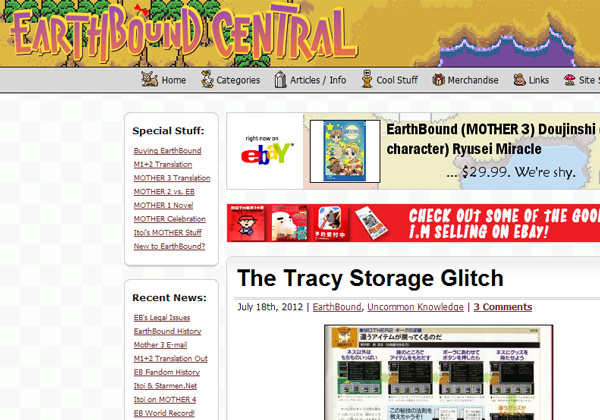

Red Rokk Interactive Marketing

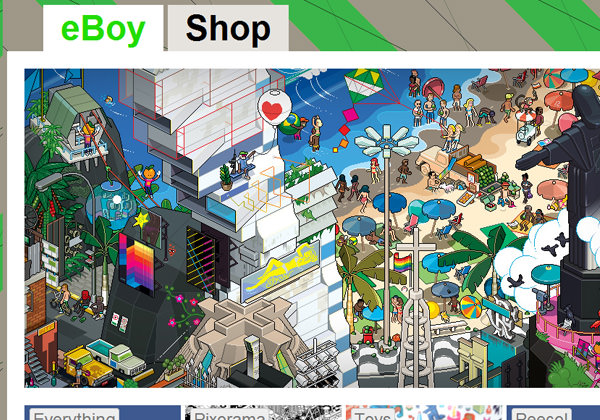
Tamago Pixel


Pixel Deviant Graphics





madPXL


ClassicGaming

RPG Toolkit Tutorials
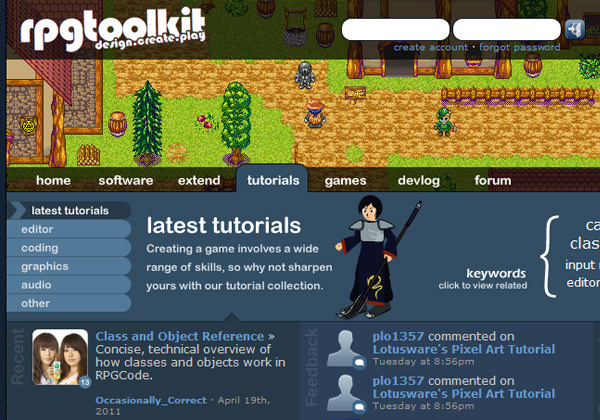

Final Fantasy XIII-2

KawaiiHannah Pixel Art

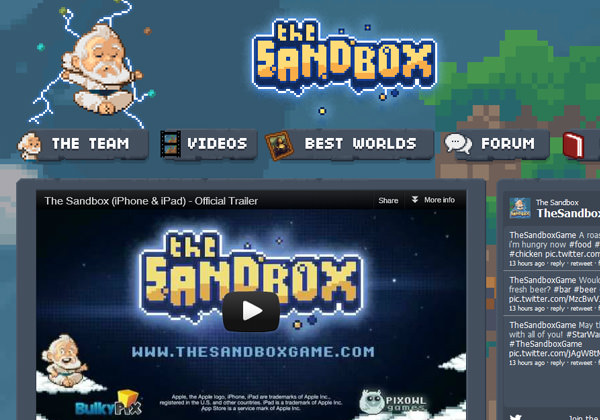



Paxjah

FoolsTown

Head Over Heels

LOVEPIXEL

Henk Nieborg


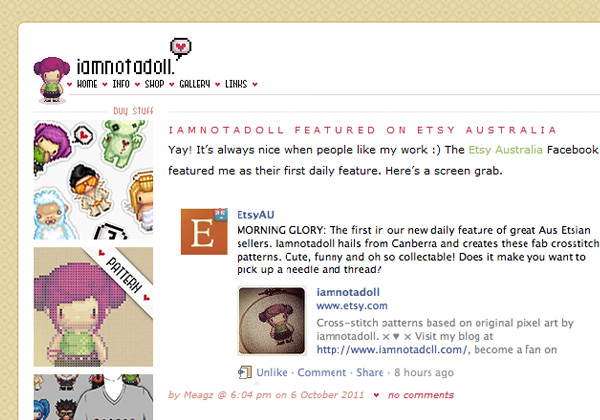
SweetPIX


Mini Metropolis



Adept Vormgeving
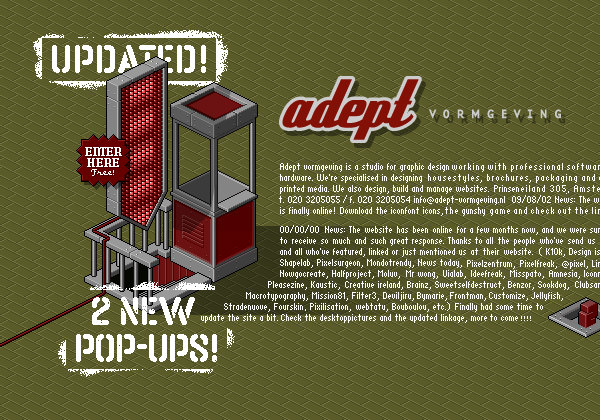


Polpo.net
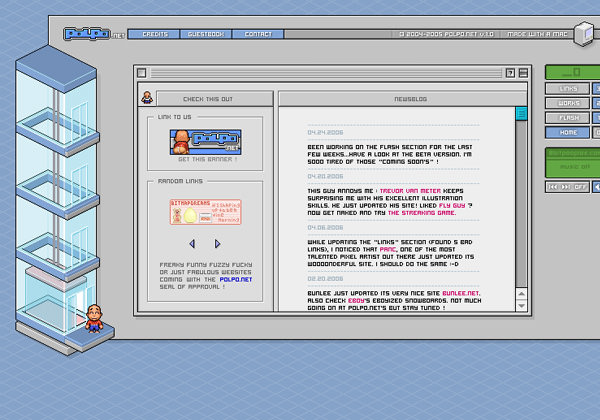

4 Real Dough
